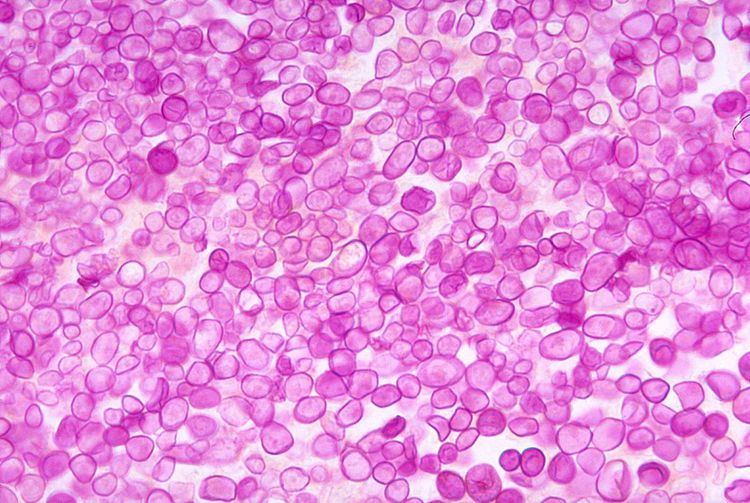Domain Eukaryota Rank Species | ||
 | ||
Similar Prototheca, Prototheca wickerhamii, Helicosporidium, Trebouxiophyceae, Streptococcus uberis | ||
Prototheca zopfii is aerobic, unicellular, yeast-like, achlorophyllic (without chlorophyll) microalga.
Contents
Distribution
P. zopfii is opportunistic, environmental pathogen and ubiquitous in nature. This alga is mainly associated with wet areas and places with high organic contents. It can be found in tanks, well water, teat-dip containers, and milking machines.
Reproduction
P. zopfii reproduce asexually by endosporulation.
Culture media
Sabouraud agar is used as a cultural medium.
Differential diagnosis
Polymerase chain reaction and restriction fragment length polymorphism analysis are useful tool for rapid confirmative diagnosis.
Pathogenicity
The species can infect man and animal, causing mastitis. P. zopfii can cause bovine clinical mastitis in high milk-yielding cows. Genotypes I and III are not involved in the pathogenicity of mastitis and probably are pollutants of milk, whereas genotype II is the main cause of mastitis.
Outbreaks
Bovine mastitis outbreaks by P. zopfii is a global problem. It is reported from Europe, Asia, North America, and South America.
Antimicrobial therapy
P. zopfii is less susceptible or completely resistant to clotrimazole, fluconazole, econazole, flucytosine, cefoperazone, cephalexin, enrofloxacin, lincomycin, oxytetracycline, miconazole, colistin, a combination of amoxicillin with clavulanic acid, enrofloxacin, amoxicillin, tetracycline, penicillin, lincomycin, and novobiocin, whereas drugs such as nystatin, ketoconazole, and amphotericin B are effective against algae isolated from milk of mastitis-affected cows.
